The classic proprietary computers from the 1980’s and 1990’s had the most fun games from your childhood. While the 8-bit home computers of the era such as the Commodore 64, Atari 400, Colecovision, Coleco Adam, Intellivision, and Amstrad PC were limited in processing capability and audio visual effects, the games made more than adequate use of the hardwares’ abilities to deliver superbly entertaining games. By the mid 1980’s and early 1990’s more advanced 16-bit home computers and game consoles such as the Commodore Amiga, Atari 520ST, Sega Genesis, TurboGrafx-16, and Nintendo SNES began to penetrate the home market. These machines delivered much superior performance due to faster 16-bit microprocessors coupled with hardware accelerated video graphics and digitized sound effects. The early adoption of hard disc drives and CD-ROM drives also helped to fuel media rich content.
Several of the favourite titles from that era have been remade using the latest technology, sound, and advanced graphics. Due to the vastly improved capabilities of today’s computers, these games can be played in web browsers for universal compatibility, and even many of the smartphones and tablet computers.
Beer Rush – Inspired by Tapper

Tapper was an arcade game released by Bally Midway in 1983. It was ported to multiple home computer platforms including the Apple II, Atari 8-bit family, Atari 5200, Atari 2600, BBC Micro, ColecoVision, Commodore 64, MSX, ZX Spectrum, IBM PC, and Amstrad CPC. Due to controversy relating to encouraging minors to consume alcohol, the game as also marketed as Root Beer Tapper for arcade machine platforms.
Tapper received exceptional reviews in multiple publications such as Compute!’s Gazette. It featured clean graphics and catch music scores It was very easy to learn, as the joystick controller was used to simply move up or down to the more urgent tap, and press the button to fill and slide a drink down the table. The rambunctious patrons slid the empty glass down the table once finished, and the bartender needed to move to the correct table and location to catch the glass before it broke. Four different venues with 13 total levels featuring unique characters are presented, as well as a bonus round between the levels. An excellent browser based emulation of the Commodore 64 version of Tapper is available here.

Beer Rush is a similarly themed game set in a western saloon with a great soundtrack. It features simple push button game play mechanics which are used to both move to the selected table and to dispense the beer. It does not feature as many venues as the original, or mini-games between the scenes, but nevertheless captures the fast paced feel of having to keep up with everything. You can enjoy Beer Rush here.
Invaders War – Inspired by Space Invaders
Space Invaders is one of the most memorable video games from the original home game consoles and original arcade machines. In arcade machine format, it was manufactured and sold by Taito in Japan originally in 1978, and exported to foreign markets by the Midway division of Bally. The original space invaders can be enjoyed here. Perhaps it was just the simplicity of shooting down an army of space ships slowly moving closer in a rhythmic succession, with the only defence being a set of walls rapidly disintegrating under enemy fire, that made this game so addictively fun. It was one of the key drivers of sales of the Atari 2600 home game console in 1980.

Invaders War, the remake of space invaders, features improved graphics and better frame rates, and much of the same game play that made this game such a hit at the dawn of the home computer revolution in the early 1980’s.

Invaders War can be enjoyed here.
Pac Maker – Inspired by Pac-Man
Perhaps one of the most memorable arcade games of all time is Pac-Man. It was developed and released for arcade machines by Japanese game developer Namco in 1980. The concept of the game was very simple: to gobble up dots inside a maze while at the same time avoiding ghosts. Special blinking power pellets could be consumed via provide temporary invincibility and the ability to eat the ghosts for extra points. The game was quickly released on a broad range of game consoles and home computers around the same time for multiple markets including the Americas and Europe.
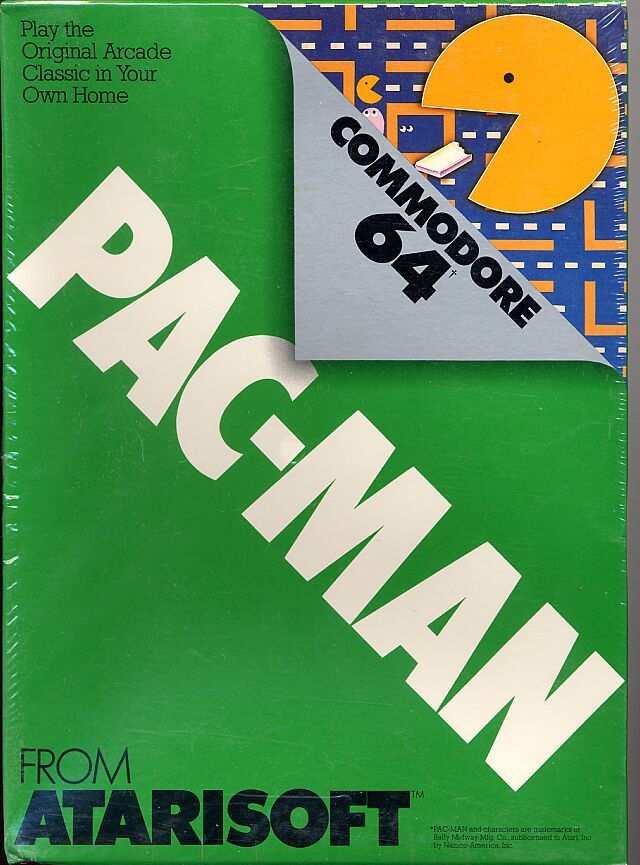
The game became a huge success, perhaps due to the simplicity which made it easy to pick up the game play, and to port to multiple hardware platforms with little difficulty. Namco also worked very effectively with multiple partners to get the game into many different markets and numerous platforms quickly. You can enjoy original Commodore 64 port of the game from 1983 here. Later, various variants of the game were developed such as Ms. Pac-Man, which was developed by General Computer Corporation and published by Midway in 1982 with consent from Namco.
Pac Maker is very similar to the original Pac-Man, except that it features improved sound and graphics and distinct levels.

You can play it here.
Cliff Diving – Inspired by World Games
Epyx was a game developer and publisher based out of San Francisco, California that produced some of the most iconic games of the era. Their games series, which included Summer Games, Summer Games II, Winter Games, California Games, and World Games were renowned for the authenticity, gameplay, and cutting edge animation of the athletes. These games featured the national anthems from the various countries competing, and special events such as the opening and closing ceremonies.
World Games, which was developed in 1986, was praised for the excellent suite of games that were particularly popular and uniquely representative of the sports history and cultural heritage of their respective countries. This included barrel jumping (Germany), bull riding (United States), caber toss (Scotland), cliff diving (Mexico), log rolling (Canada),weightlifting (former Soviet Union), slalom skiing (France), and sumo Wrestling (Japan).

You can play World Games for the Apple II GS, which was released in 1987, here.
Similar to the cliff diving event from World Games, Cliff Diving is a great game to refine your diving skills. It is set in various venues, and features refreshing sound and animated cartoon graphics of a large cliff diver. You select the launch angle and the in flight acrobatics using the carefully timed clicking of the mouse button.
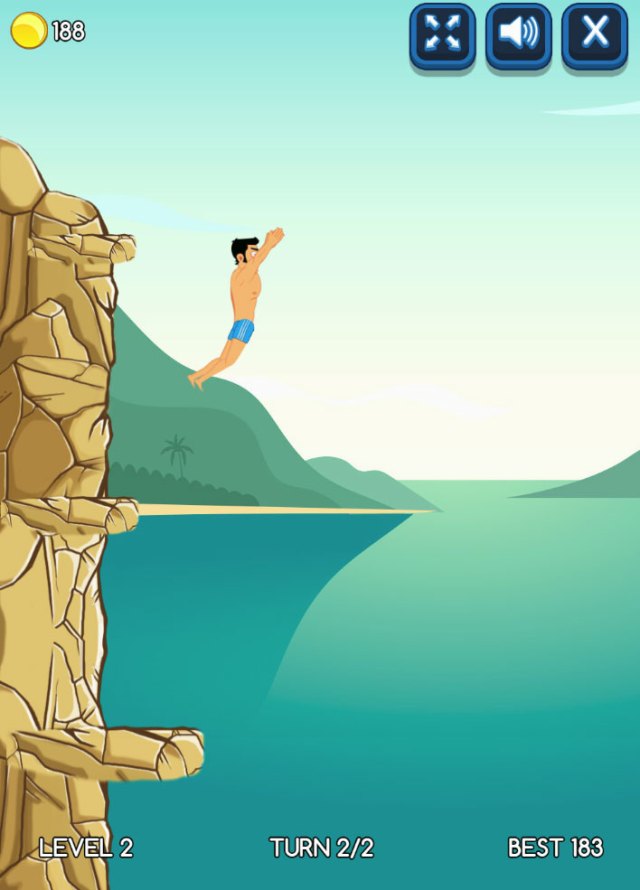
Cliff Diving can be played here.
Froggie Cross The Road – Inspired by Frogger
The game Frogger was developed by Konami in 1981 by manufactured for the arcade machines by Sega/Gremlin. The game was an immediate hit, and it was quite exhilarating to help the frog cross the road with oncoming traffic, and the pond which required carefully jumping between the backs of alligators and logs.
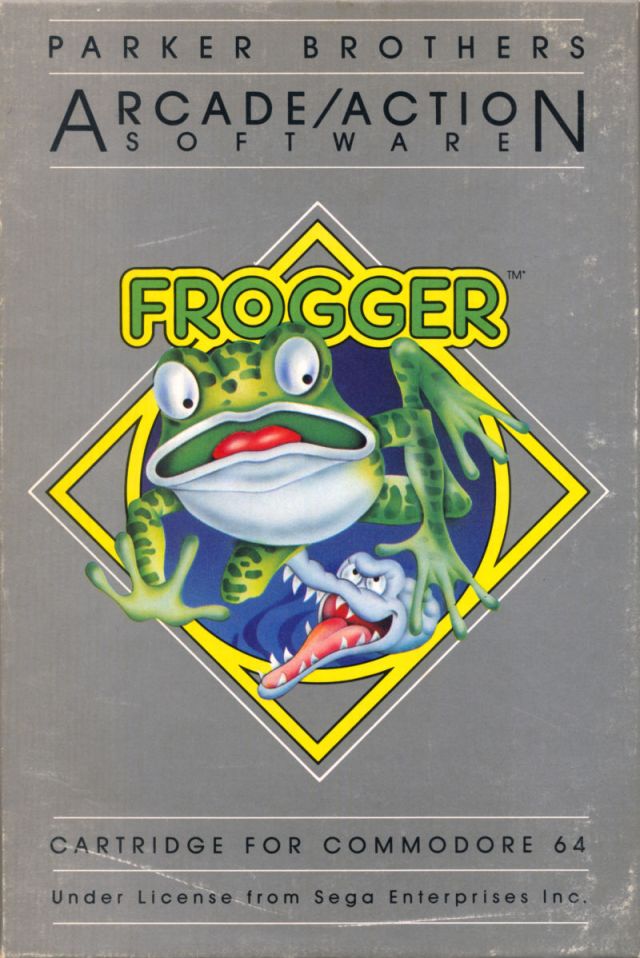
Due to the sheer simplicity of the game, it appealed to a wide demographic in terms of age and gender. The arcade machine went on to earn $130 Million for Sega/Gremlin in the US, a huge success for the rapidly growing arcade cabinet game industry at the time. Frogger eventually also went on the sell 20 million units as ports to various home video game systems and home computers. You can enjoy the Commodore 64 port of frogger here.
Froggie Cross The Road has been upgraded with advanced colourful graphics and sound for the latest mobile phones and tablet computers.

You can enjoy Froggie Cross The Road here.
Duck Shooter – Inspired by Nintendo
Duck Hunt was developed and released by Nintendo in 1984 for their light gun shooter, a cleverly designed piece of hardware that resembled a toy gun you point at the TV’s Cathode Ray Tube (CRT) screen to shoot at on-screen objects. The software would be able to infer, with adequate accuracy, the x and y coordinates of where the toy gun was pointing. The player was required to shoot one or two ducks in each round with three shots, and advancement to the next round required a minimum number of successful attempts. The catchy and cartoonish graphics made this game, along with the light gun shooter hardware, a top seller and eventually 28 million copies were sold worldwide. You can play a remake of the Duck Hunt for the Nintendo here.

Duck Shooter recreates the same experience with more advanced graphics and sound, and similarly cartoonish animation sequences.
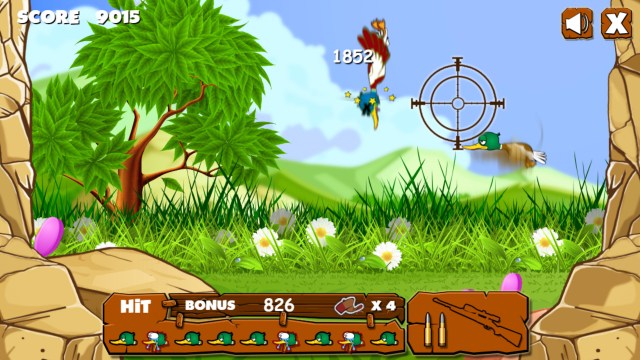
You can enjoy Duck Shooter here.
Car Rush – Inspired by Out Run
Out Run was an amazing 3D racing game released by Sega in 1986. Remarkably, it was developed by a relatively modest sized team of ten people in under a year. What made this game very special was the careful attention to graphics detail, exceptional gameplay, and smooth graphics. Special touches such as user selectable sound track and checkpoint based milestones made the game particularly fun, along with wide open roads with curves and hills that made the driver’s eye level camera set to view the rear of the car, a red Ferrari Testarossa, made the game particularly memorable. The arcade cabinets were well crafted, and featured realistic feeling steering wheel, brakes, accelerator, and gear shifter. Out Run became the highest grossing arcade game of 1987.

By late 1987 Out Run had sold 20,000 arcade units worldwide, resulting in sales of about $100 Million. By Spring of 1988, Out Run had sold over 350,000 8-bit ports in UK alone. It also became one of the best selling titles for the 16-bit Atari ST computer line. It sold over 25,000 units in the UK by mid-1988. Eventually, it went on to sell millions of units for the various home computer and game console ports. You can enjoy port for the 16-bit Sega Genesis game console here.
Car Rush has a similar feel to the Out Run game. It has three different tracks, and features an excellent soundtrack with very smooth, large and well illustrated graphics.

You can play Car Rush here.
Falling Cubes – Inspired by Tetris
Soviet software engineer Alexey Pajitnov developed Tetris, a classic puzzle game, in 1984 in the former Soviet Union for the Electronika 60 computer. The game had several basic shapes consisting of blocks connected to one another, that gradually fell towards the ground. The object of the game was to rotate and shift the pieces such that each horizontal level was filled with the shapes. The game was so simple to learn that it did not even require the study of the game instruction manual, and yet it was surprisingly addictive and challenging to master. The basic graphics and simple game play if the game made it easy to many different computers, and it was ported to over 65 platforms. The game sold extremely well, and by the year 2011 over 200 Million copies had been sold to desktop computers, game consoles, and mobile smartphones.
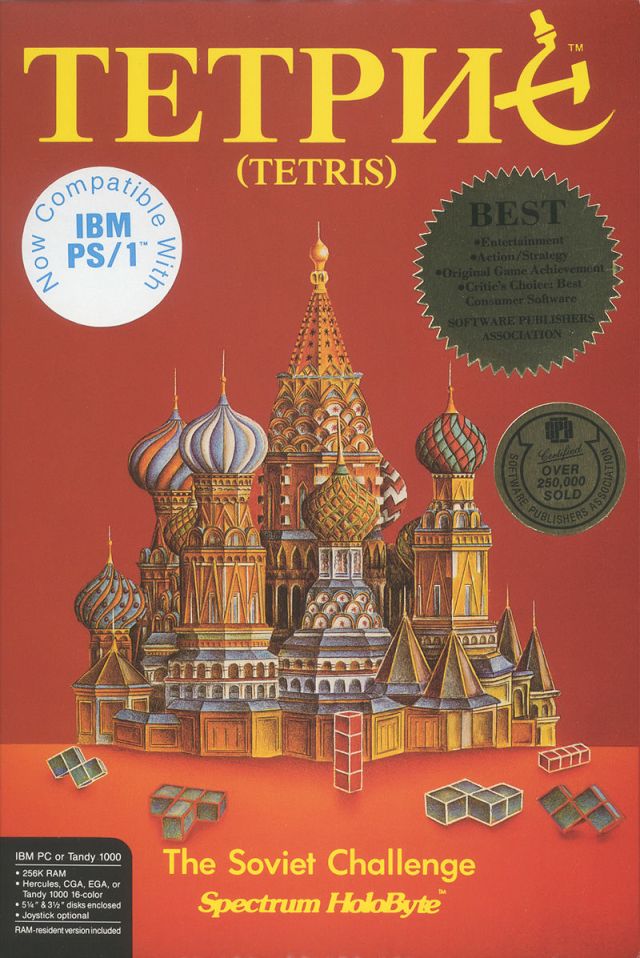
The MS-DOS version of Tetris, enhanced with VGA graphics and SoundBlaster card audio in 1992, can be played here.
Falling Cubes is an optimized version of Tetris for modern computers and mobile phones. It features a catchy background music, and a isometric 3D display of the falling shapes.
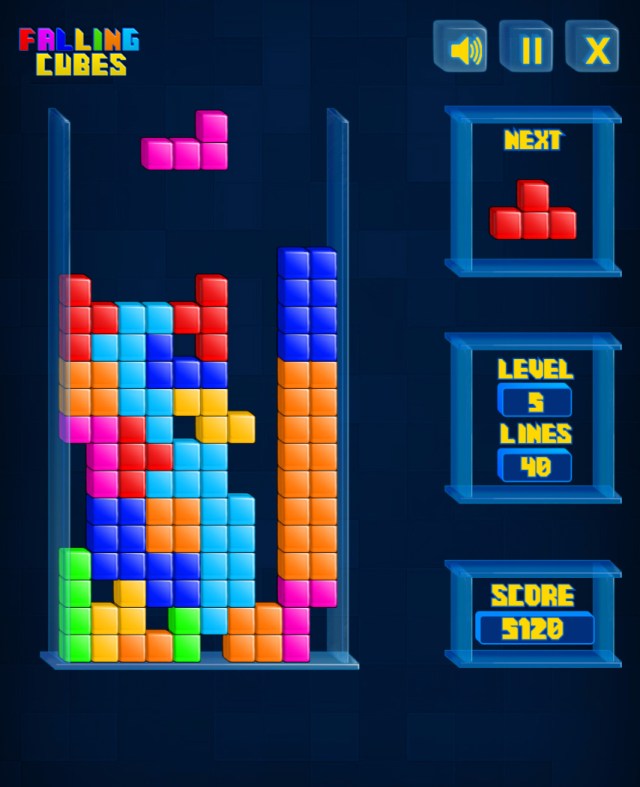
You can enjoy Falling Cubes here.